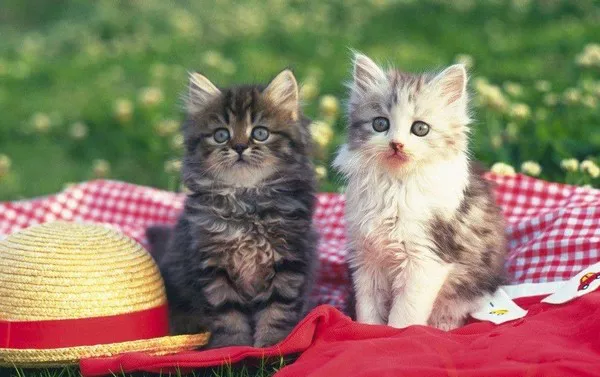Calico cats are among the most captivating and visually striking of feline companions, boasting a distinctive tri-color coat pattern that sets them apart. These cats, with their unique blend of colors, have fascinated and intrigued cat enthusiasts and geneticists alike for centuries. In this comprehensive exploration, we delve into the genetics, color patterns, personalities, and care of calico cats, while also debunking common myths and delving into the folklore surrounding these enigmatic creatures.
Genetics of Calico Cats
To understand the mesmerizing coat patterns of calico cats, one must first grasp the underlying genetics at play. Calico cats are typically females, and their unique coat pattern is a result of genetic factors tied to the X chromosome. The gene responsible for coat color in cats, the O gene, has multiple alleles that determine different coat colors such as black, orange, and white.
Female cats have two X chromosomes, and males have one X and one Y chromosome. The presence of two X chromosomes in females allows for a phenomenon called X-inactivation, where one X chromosome is randomly silenced in each cell during embryonic development. This leads to the mosaic pattern of colors observed in calico cats, as different patches of fur express the colors determined by the active X chromosome in each cell.
Male calico cats are extremely rare and typically sterile. This is because male cats possess only one X chromosome, and for a male cat to exhibit the calico pattern, it must have a genetic anomaly such as XXY trisomy or chimerism, where two distinct populations of cells with different genetic makeups coexist within the same organism.
Color Patterns
Calico cats exhibit a kaleidoscope of colors, with their coats showcasing a harmonious blend of black, orange, and white. The distribution of these colors can vary greatly from cat to cat, ranging from predominantly white with patches of black and orange to more evenly distributed tri-color patterns.
The intricate patterns seen in calico cats can include spots, stripes, and swirls, creating a visually stunning mosaic that is unique to each individual cat. The precise combination of colors and patterns is determined by a complex interplay of genetic factors and chance during embryonic development.
Dilute Calico Cats
In addition to the classic tri-color calico pattern, there exists a variation known as the dilute calico. Dilute calico cats possess muted versions of the traditional colors, with soft pastel shades of gray, cream, and pale orange replacing the vibrant hues found in standard calicos. This subtle variation adds another layer of complexity and beauty to these already captivating felines.
The dilute calico pattern is the result of specific genetic mutations that affect the production of pigment in the fur, resulting in a softer, more muted color palette. Despite the muted tones, dilute calico cats retain the distinctive tri-color pattern that sets them apart from other cats.
Gender and Calico Cats
As previously mentioned, the vast majority of calico cats are female, with only a small percentage of males exhibiting this unique coat pattern. This gender disparity is due to the genetic mechanisms underlying calico coat coloration, which require the presence of two X chromosomes.
Male calico cats are typically sterile and may exhibit a range of health issues associated with genetic anomalies such as XXY trisomy or chimerism. Despite their rarity, male calico cats are cherished by enthusiasts and are often considered lucky charms or symbols of good fortune in some cultures.
Calico Cat Personality and Care
Beyond their striking appearance, calico cats are beloved for their distinct personalities and playful demeanor. These cats are known for their intelligence, independence, and affectionate nature, making them popular companions for families and individuals alike.
Calico cats thrive in environments where they receive plenty of mental stimulation and physical activity. Interactive toys, scratching posts, and regular play sessions can help keep these active felines entertained and engaged. Additionally, providing a balanced diet, regular veterinary care, and a safe indoor environment are essential for maintaining the health and well-being of calico cats.
Myths and Folklore
Throughout history, calico cats have been surrounded by myths, legends, and folklore that have contributed to their mystique and allure. In many cultures, calico cats are revered as symbols of luck, prosperity, and protection, with superstitions attributing various powers and attributes to these colorful felines.
In Japanese folklore, calico cats, known as “Maneki-neko” or beckoning cats, are believed to bring good fortune to their owners and are often depicted with one paw raised in a welcoming gesture. Similarly, in American folklore, calico cats are considered lucky charms, with sailors and fishermen believing that having a calico cat on board would ensure a safe voyage and bountiful catch.
Despite their positive associations, calico cats have also been the subject of superstitions and myths regarding their supposed ability to predict the weather or ward off evil spirits. These myths, while entertaining, serve to highlight the enduring fascination and reverence bestowed upon calico cats throughout history.
In conclusion, calico cats are truly remarkable creatures that captivate the imagination and inspire admiration with their unique beauty, playful personalities, and rich history. By understanding the genetics, color patterns, personalities, and care requirements of calico cats, we can deepen our appreciation for these enchanting felines and celebrate the diversity and wonder of the natural world.
Related Topics:
























